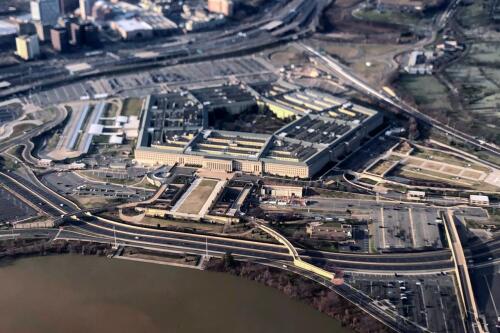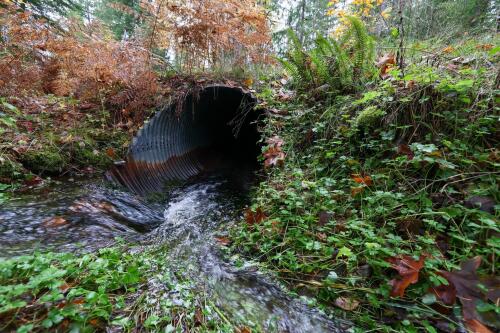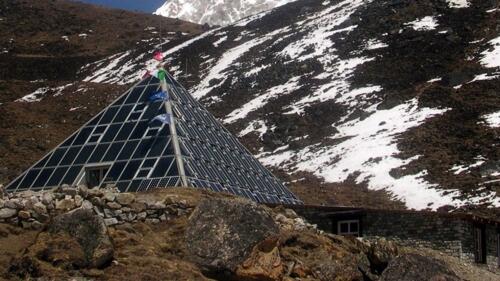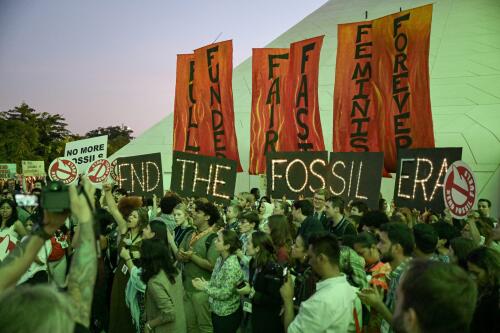Climate
Governments must start to distinguish between the good subsidies they need to fight the climate crisis and the bad ones that are increasing greenhouse gas emissions, the world’s trade chief has said. Subsidies and other incentives to burn fossil fuels and encourage poor agricultural practices, amounting to about $1.7tn a year, are distorting world trade and hampering the fight against climate breakdown, Ngozi Okonjo-Iweala, the director general of the World Trade Organization, told the Guardian. “Can you imagine if we said, we are going to repurpose those subsidies into other friendly subsidies, like for research and innovation?” she said. “I don’t mind that kind of subsidy.” She gave the example of clean cooking stoves in the developing world. Instead of subsidising fossil fuels, governments could subsidise clean stoves that use solar power or electricity instead of burning wood. “These kinds of sub...
In the ever-shifting landscape of Washington politics, a noteworthy narrative is unfolding—one that hinges on the interplay between climate change, national security, and fiscal responsibility. At the heart of this story is the Pentagon and its efforts to integrate climate risk management into its strategic framework. At Taxpayers for Common Sense, we’ve documented the growing costs of climate change to taxpayers and national security, so we know how important it is for the Pentagon to reckon with these risks. Unfortunately, Congress is still wedded to a more traditional approach—willful, if not so blissful, ignorance. The debate centers around the Federal Acquisition Regulation (FAR) Council’s proposal, a common sense rule change requiring major Pentagon suppliers to report their greenhouse gas emissions and set emissions reduction targets. It’s not just environmental bookkeeping; it’s about understanding...
Record-setting rainfall this past week sent Puget Sound’s rivers and streams over their banks, flooding homes in Snohomish County, closing roads and triggering mudslides. The atmospheric river was another blunt reminder of the dangers floodwaters pose to human-made infrastructure, including the culverts that guide waterways underneath the region’s roads. At least one creek’s surge outside Port Orchard overwhelmed a three-foot-wide metal culvert beneath Sunnyslope Road, washing out the road above it. Repairs will take months, closing the thoroughfare indefinitely. Culverts, the artificial pipes that squeeze once-meandering streams through a bottleneck of concrete or metal, exact an ecological toll on species like salmon. But they’re also an increasing liability in an era of climate change. Washington’s transportation network must become more resilient to such flooding in a time of diminished snowpack, heavy rainfall...
Glaciers in the Himalayas are melting rapidly, but a new report showed an astonishing phenomenon in the world’s tallest mountain range could be helping to slow the effects of the global climate crisis. When warming temperatures hit certain high-altitude ice masses, it sets off a surprising reaction that blows robust cold winds down the slopes, according to the study published December 4 in the journal Nature Geoscience. The warming climate creates a greater temperature gap between the surrounding air above Himalayan glaciers and the cooler air directly in contact with the ice masses’ surface, explained Francesca Pellicciotti, professor of glaciology at the Institute of Science and Technology Austria and lead author of the study. “This leads to an increase in turbulent heat exchange at the glacier’s surface and stronger cooling of the surface air mass,” she said in a news release. As the cool, dry surface air gets coole...
Dubai, United Arab Emirates—”The North Star of the COP28 Presidency is to keep 1.5°C within reach,” has been the frequent refrain of Sultan Ahmed Al Jaber, the COP28 president overseeing the current U.N. climate change negotiations in Dubai. Al Jaber is reflecting the oft-chanted activist slogan “Keep 1.5 Alive!” The idea is that humanity must reduce its emissions of globe-warming greenhouse gases from burning fossil fuels sufficiently to keep the planet from warming more than 1.5 degrees Celsius above the pre-industrial baseline (1850-1900). It is worth tracing the history of where the 1.5 C “North Star” originated and what the consequences of breaching it would likely be. The 1.5 C threshold was officially enshrined as a goal under the United Nations Framework Convention on Climate Change with the adoption of the Paris Climate Change Agreement in 2015. Article 2 in the Paris Agreement commits s...




